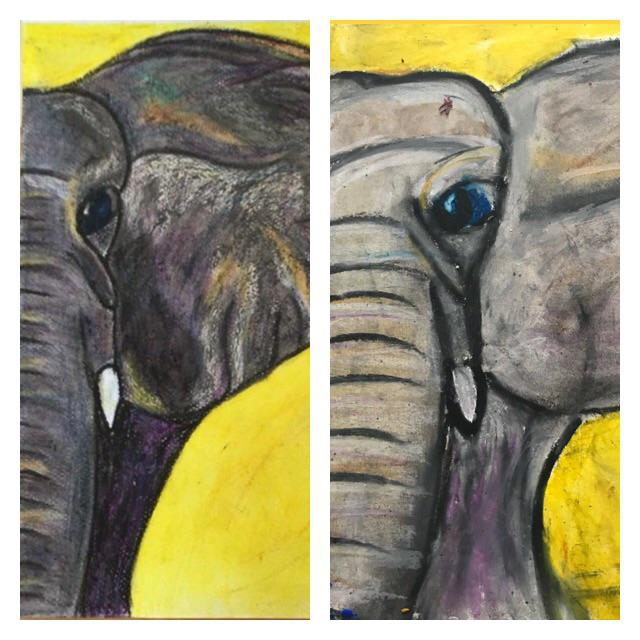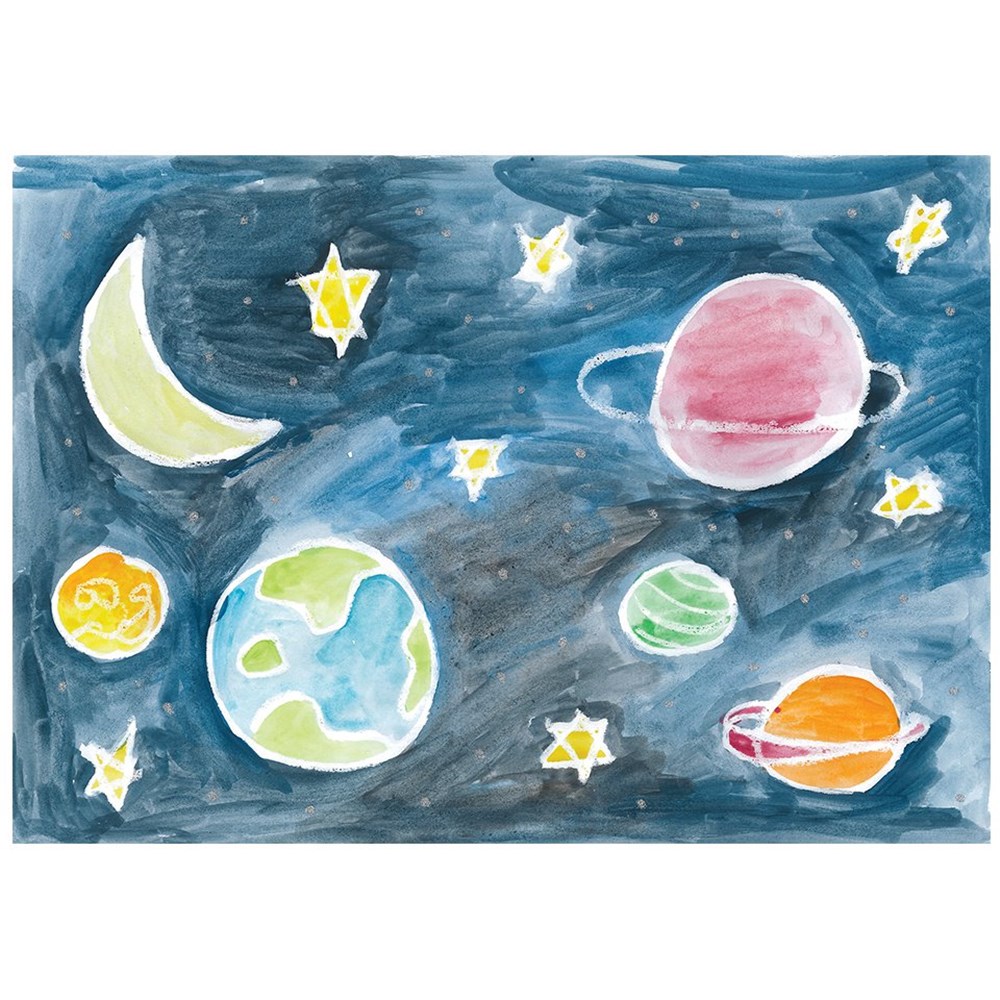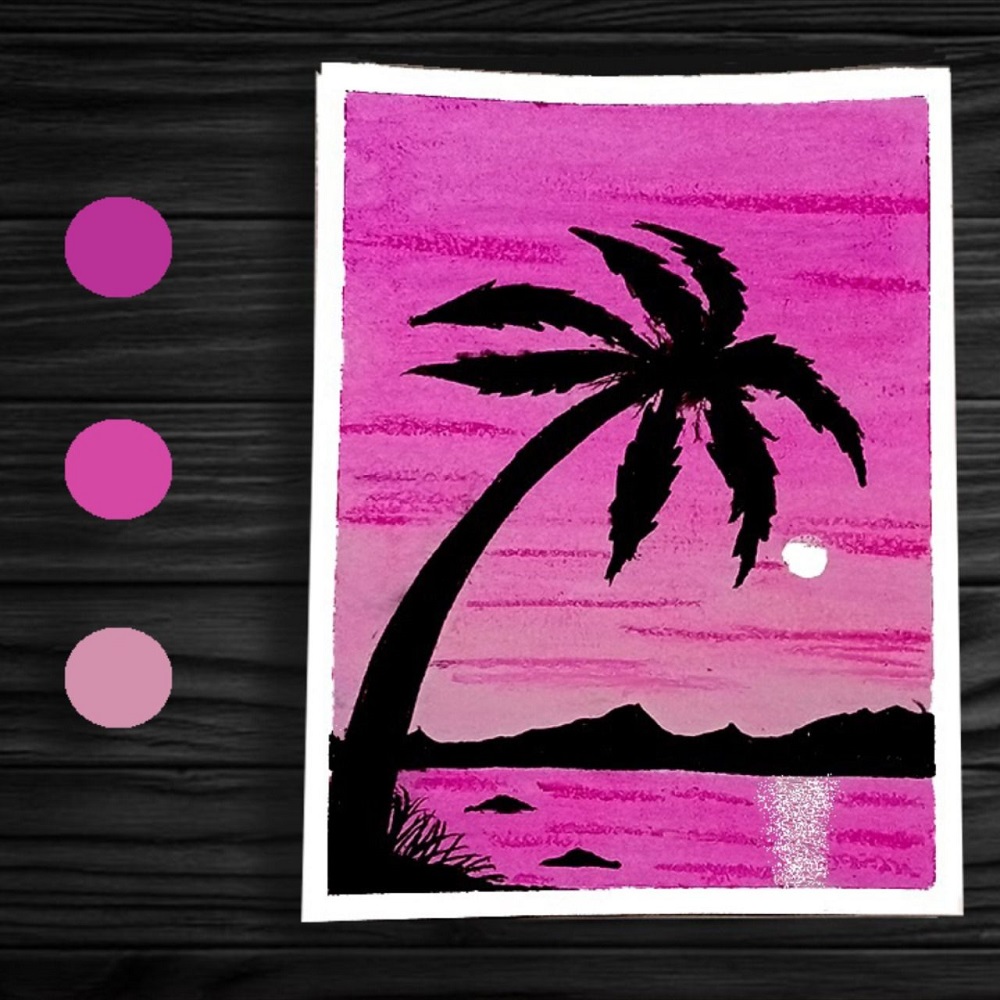Introduction to Oil Pastel Cityscapes
Oil pastels bring a vibrant and dynamic edge to cityscape art. They allow artists to layer colors, blend shades seamlessly, and create rich textures that echo the bustling energy of urban settings. Whether you’re a beginner or a seasoned pastel artist, crafting a cityscape with oil pastel painting ideas can be both fulfilling and challenging.
Cityscapes capture the essence of a city’s personality. Each building, street, and vehicle plays a part in the grand painting. With oil pastels, you have the perfect medium to express the luminosity of streetlights or the soft glow of a sunset behind skyscrapers. Their waxy texture enables you to mix colors directly on the canvas, inviting an experimental approach to depicting light and shadow.
Imagine translating the hustle of New York, the romantic allure of Paris, or the historic charm of Rome onto paper with oil pastels. In these urban landscapes, the possibilities are endless. You have the creative freedom to highlight what draws you to a city, whether it’s the architectural grandeur, the people, or the unique atmosphere. Oil pastel painting ideas can start with a famous landmark, a lively urban park, or a quiet street corner that tells a story.
Dive into this guide to discover how to harness the potential of oil pastels and start creating captivating cityscapes that come alive. Let’s embark on this journey to learn about the essential materials, techniques, and steps needed to craft your urban masterpiece in oil pastels.
Essential Materials for Oil Pastel Cityscapes
To begin your oil pastel cityscape, you will need certain essential materials. First, select your oil pastels. Look for high-quality pastels that offer a variety of colors to capture the urban essence. Next, choose your paper. Heavyweight paper with a good texture is ideal for layering pastels. You’ll also need blending tools. Tortillons, blending stumps, and even your fingers can help mix colors effectively.
Choosing Your Oil Pastels
Find a set of oil pastels that feels comfortable to work with. Soft oil pastels blend easier, while harder ones offer more control and precision. Test out a few brands to see which you prefer.
Selecting the Right Paper
The paper’s quality can make a huge difference. Opt for textured paper as it holds layers well. Pastel paper or heavy watercolor paper works great for cityscapes.
Blending Tools
While you can blend with your fingers, other tools bring different effects. Cotton swabs and paper tortillons allow for more detailed blending, perfect for intricate city lights and shadows.
Fixatives
A workable fixative spray can help to keep your pastel layers in place as you work, avoiding smudges and preserving your painting’s progress.
These materials will set the stage for your oil pastel cityscape masterpiece. By choosing the right pastels, paper, and tools, you are prepared to bring your urban vision to life. Next, learn blending techniques to add depth and realism to your cityscapes.

Techniques for Blending and Layering in Oil Pastel
Mastering the art of blending and layering is vital in achieving the depth and vibrancy of urban scenes with oil pastels. Here’s a rundown of some essential techniques to enhance your oil pastel cityscapes.
Use Your Fingers for Soft Transitions
Your fingers are excellent tools for blending oil pastels. They can create smooth, soft transitions between colors. Softly rub the pastels where they meet to blur the lines for a seamless blend.
Employ Blending Stumps for Precision
Blending stumps, also called tortillons, are perfect for detailed work. They help blend tiny areas without affecting the surrounding colors. Use these for intricate parts of the cityscape, like windows and signs.
Layer Colors to Build Depth
Start with lighter shades and slowly add darker layers on top. This technique allows you to build color intensity and depth gradually. Oil pastel painting ideas often evolve as you layer, creating a rich tapestry of hues.
Create Textural Effects with Layering
Layering isn’t just about colors—it’s also about texture. Experiment with different pressures and strokes to mimic city textures like brick walls or asphalt.
Mix Colors on a Palette for Consistency
Oil pastels can be blended on a separate palette before applying them to the paper. This step ensures consistent color throughout your piece. Mix your colors on the palette, then apply them with a pastel knife or directly with the pastels.
Work Dark to Light for Impact
Typically in painting, you work from dark to light. Apply your darker shades first and gradually work in lighter colors for highlights and detail. This method anchors your cityscape with a solid foundation and allows the bright highlights to pop.
Applying these blending and layering techniques will propel your oil pastel cityscapes to new heights. Remember to practice to find what works best for you and your artistic style.

Step-by-Step Guide to Creating a Night Sky Cityscape
Creating a night sky cityscape with oil pastels is a fantastic way to portray the vibrant nightlife of a city. Here’s a simple guide to help you achieve a mesmerizing nocturnal urban landscape.
- Start with the Sky: Begin by setting the stage with a dark background. Choose deep blues and purples to fill the sky. Gently combine these colors until you get a smooth, night sky effect.
- Add the Stars: Use a white oil pastel to dot your sky with stars. For larger stars, press harder or circle gently. For a twinkling effect, add tiny dots in clusters.
- Outline the Cityscape: Lightly sketch the outline of buildings, bridges, and other structures with a light gray pastel. This helps map out your scene.
- Fill in the Buildings: Using various shades of gray and black, fill in your buildings. Use vertical and horizontal strokes to suggest windows and architectural details.
- Brighten with Lights: To depict lights, apply small strokes of yellow or light orange for windows. Use a blending stump to soften and spread the light, creating a glow.
- Highlight Reflections: For bodies of water or glass, add streaks of the surrounding colors to represent reflections. Blend them horizontally to achieve the right effect.
- Adjust the Details: Go back and add or reduce details as needed. Use a sharp edge of a pastel to get fine lines for more intricate parts. If areas get too muddled, layer on some dark colors to redefine.
Through these steps and the creative use of oil pastel painting ideas, you’ll bring a night-time cityscape to life. Remember to work layer by layer, and don’t rush the process. With patience and practice, your oil pastel cityscapes will glow with the magic of the night.
Incorporating Wildlife into Urban Oil Pastel Paintings
Adding wildlife to your urban oil pastel paintings can bring a unique life to your art. Charming creatures, like birds perched on streetlights or squirrels scurrying in parks, create a link between nature and the city. Here’s how to weave wildlife into your cityscapes creatively.
- Start with Observations: Notice how animals interact with urban elements. A pigeon might rest on a building ledge, or a cat may wander an alley. Include these natural behaviors.
- Sketch the Animals: Begin with light sketches of the animals in your urban setting. Position them where they add interest but don’t dominate the scene.
- Apply Base Colors: Choose natural colors for your animals. Use browns, grays, and subtle greens. These provide a good foundation before adding details.
- Blend for Realism: Use your fingers or blending stumps to soften edges. This integration makes the animals look a natural part of the urban environment.
- Highlight with Light: Imagine where the city lights hit your wildlife. Add small, bright touches to reflect this. It adds dimension and catches the viewer’s eye.
- Adjust as Needed: Step back and look at your painting. Make sure your wildlife complements the cityscape. Adjust sizes, colors, or positions as needed.
Incorporating wildlife into your oil pastel cityscapes offers a refreshing angle to city life. It brings warmth and authenticity that resonates with viewers. With practice, your cityscapes will become vibrant scenes bustling with both urban energy and natural grace.

Exploring Different Textures with Oil Pastel Surfaces
To capture a city’s essence, experimenting with different textures is key. Different surfaces bring these textures to life. Let’s dive into ways to use oil pastel surfaces for varied effects.
- Use Coarse Paper: For rough textures like brick or gravel, go for a paper with a coarse grain. It gives a tactile feel that mimics these surfaces.
- Smooth Paper for Skies and Water: When painting the sky or calm water, use fine-textured paper. It helps create a smooth and serene look.
- Layering for Complexity: Build up layers of pastels. Start light and add darker shades. Each layer adds depth and detail to the urban texture.
- Etching for Detail: Apply a layer of oil pastel, then etch into it with a pointed tool. This reveals the layer beneath and creates fine details. Think building facades or street signs.
- Mixing Media for Unique Textures: Don’t be afraid to mix oil pastels with other media. Try adding pencil lines or acrylic touches for new textural qualities.
- Sgraffito Technique: Lay down a dark color, then a light one on top. Scratch off the top layer for dynamic lines. It’s great for showing light effects in your cityscape.
- Crumpling for Effect: Crumple your paper then smooth it out before you start. This creates a textured surface that adds an interesting dimension to your artwork.
Exploring these techniques opens up a world of textural possibilities for your oil pastel cityscapes. It adds realism and layers of interest to your artwork.
Crafting a Water Scene with Reflections in Oil Pastel
Crafting a water scene with reflections in your oil pastel cityscape adds depth and beauty. It mirrors the urban lights and sky in the tranquil water surface, creating a striking effect. Here are steps to create this captivating element in your painting:
- Select Colors for Water: Begin with dark blues and greens for the water’s base. These shades represent depth in the water.
- Add Reflections: Observe how light reflects on water in a real scene. Use lighter shades of the sky and city lights to represent reflections.
- Blend for Smoothness: Softly blend the reflection colors into the water base. This creates a seamless look of light playing on water.
- Create Rippling Effects: Use short, horizontal strokes to suggest the movement of water. Vary pressure for a realistic ripple.
- Highlight with White: To create sparkle, add touches of white. Press lightly where light is strongest on the water.
- Adjust with Surroundings: Compare the water with the rest of your cityscape. Make sure the reflections match the colors and light sources.
Adding reflections in water requires patience. Work slowly to blend and build layers. Watch your cityscape come alive with a masterful water scene reflecting an urban night sky or sunset.
Final Touches: How to Add Detail and Highlights to Your Cityscape
After creating the base of your cityscape, final touches add depth and life. These last steps help highlight fine details and give your artwork a polished look. Here’s how to enhance your oil pastel painting ideas with finishing touches.
Add Small Details for Realism
Zoom in on windows, doors, and signs. Use a sharp pastel point to draw tiny lines and shapes. These small elements contribute to the realism of your scene.
Brighten with Highlights
Pick a light oil pastel color for highlights. Gently layer over areas that need more emphasis. Focus on the edges where light hits, like rooftops and street lamps.
Increase Contrast
Contrast grabs attention. Strengthen dark areas near light ones to make your cityscape pop. Add dark blues or blacks against bright lights for impact.
Revisit Shadow Areas
Look at your shadows. Are they deep enough? Go back and add more layers with dark pastels to give dimension to your art.
Refine the Composition
Step back and view your work as a whole. Adjust any part that feels off. Your cityscape should guide the viewer’s eye smoothly through the scene.
Remember, oil pastel artwork evolves. Feel free to make changes until you’re satisfied. With these tips, your urban masterpiece should now stand out with stunning detail and vibrant highlights.